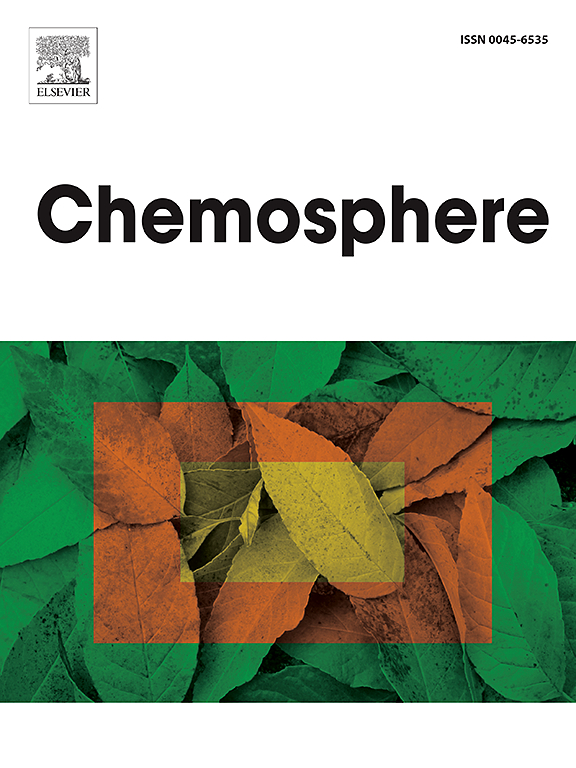原位形成的 Se-TiO2 是一种高度可重复使用的光催化剂,可用于还原和去除工业废水中的硒。
IF 8.1
2区 环境科学与生态学
Q1 ENVIRONMENTAL SCIENCES
引用次数: 0
摘要
采矿、发电和农业等人为活动释放的硒构成了相当大的环境和生态风险。硒相关问题的日益流行和认识推动了许多创新硒处理技术的发展。光催化已经显示出从工业废水中以最小残留量去除硒的前景,并且通常被认为是一种低成本、强大、无毒和潜在的太阳能方法。尽管如此,它在环境修复中的实际应用仍然非常有限。这是因为对实际考虑的研究,如光催化剂的稳定性和可重用性,往往被忽视或研究不足,而倾向于开发学术上有趣但不切实际的材料。在这项工作中,商业锐钛矿TiO2通过15个循环再利用进行压力测试,以光催化还原和去除合成矿化盐水(SMIB)中的硒酸盐,而无需洗涤或再生。值得注意的是,在所有循环中,硒酸盐的去除率超过99.3%。通过x射线吸收光谱、扫描透射电子显微镜、UV/vis漫反射等手段,研究了原位Se- tio2异质结的形成及其对Se负载、粒径、晶相等性能的影响,并阐明了其对催化剂性能的影响。本工作强调了催化剂可回收性在实际光催化环境修复中的重要性,并讨论了广泛使用对光催化剂性能的影响。本文章由计算机程序翻译,如有差异,请以英文原文为准。

In situ formed Se–TiO2 as a highly reusable photocatalyst for selenium reduction and removal from industrial wastewater
Selenium (Se) release from anthropogenic activities such as mining, power generation, and agriculture poses considerable environmental and ecological risks. Increasing prevalence and awareness of Se-related issues have driven the development of many innovative Se treatment technologies. Photocatalysis has shown promise towards Se removal from industrial wastewaters with minimal residuals, and is generally considered a low-cost, robust, non-toxic, and potentially solar-powered method. Despite this, its real-world application towards environmental remediation remains extremely limited. This is because research into practical considerations, such as photocatalyst stability and reusability, is often overlooked or understudied in favor of developing academically interesting but impractical materials. In this work, commercial anatase TiO2 is stress tested through fifteen cycles of reuse towards the photocatalytic reduction and removal of selenate in synthetic mining-influenced brine (SMIB) without washing or regeneration. Remarkably, selenate removal exceeds 99.3% throughout all cycles. In situ Se–TiO2 heterojunction formation, and changes to its properties including Se loading, particle size, and crystal phase, are characterized through X-ray absorption spectroscopy, scanning transmission electron microscopy, and diffuse reflectance UV/vis, while their effects on catalyst performance are elucidated. This work underscores the importance of catalyst recyclability for practical photocatalytic environmental remediation and discusses the effects of extensive use on photocatalyst performance.
求助全文
通过发布文献求助,成功后即可免费获取论文全文。
去求助
来源期刊

Chemosphere
环境科学-环境科学
CiteScore
15.80
自引率
8.00%
发文量
4975
审稿时长
3.4 months
期刊介绍:
Chemosphere, being an international multidisciplinary journal, is dedicated to publishing original communications and review articles on chemicals in the environment. The scope covers a wide range of topics, including the identification, quantification, behavior, fate, toxicology, treatment, and remediation of chemicals in the bio-, hydro-, litho-, and atmosphere, ensuring the broad dissemination of research in this field.
 求助内容:
求助内容: 应助结果提醒方式:
应助结果提醒方式:


